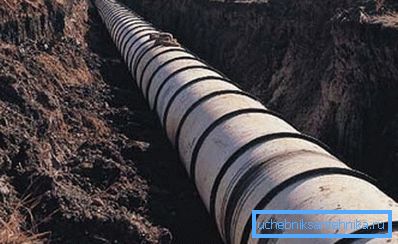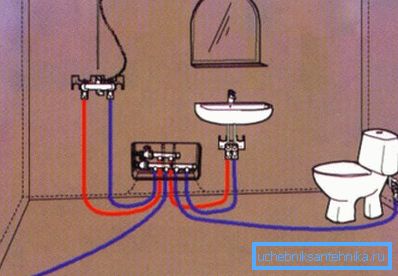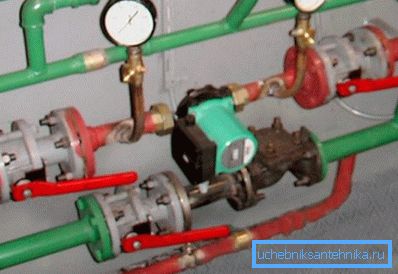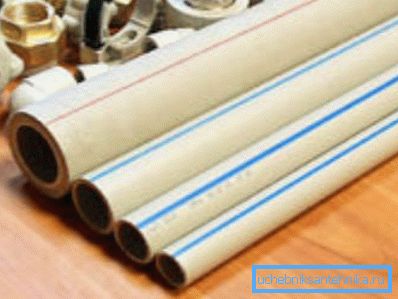Capacity of water pipe
Before we talk about what the capacity of the pipe, depending on the diameter and other parameters, let's understand what this concept means in general. Speaking of dry definitions, it is the ability to skip a certain amount of fluid over a fixed period of time. In our case, this is how many liters of water can pass through the system in 1 minute.

How can I calculate
Options for how to calculate the capacity of the pipe, at the moment there are several. Using mathematical formulas, taking data from specialized tables and resorting to the help of Internet programs (read also the article Popular methods for connecting pipes - a detailed review).
But in any case, you will need the original data.
- At a minimum, you need to know at least approximately the length of the line; the longer the track, the larger the diameter of the system is required.
- Equally important now is the material from which the system is made.. Steel pipelines that were common in the past have great resistance, plus such systems are prone to overgrowing, with the result that the diameter will decrease with time. Polymeric materials are more progressive and practical, the plastic does not linger on the plastic and the smooth surface does not create interference.
- When calculating the capacity of a pipe, it is important to know the number of water consumption points, and you need to consider how many of them can theoretically be included at the same time. After all, very few people may like the situation when when you turn on the water in the kitchen, it automatically disappears in other places.
- You can also add an average pressure in a water supply system to a mandatory list of data.

Important: not less important is compliance with the installation system. After all, if the inclination angle is not observed or the number of turns and locking mechanisms are excessive, the energy costs increase and the throughput decreases.
At once we will say that the calculation of the throughput of a water pipe using mathematical formulas is a rather complicated task. To obtain accurate values, it is necessary to have profound professional knowledge, in addition, the data for performing the calculation in any case will need to be taken from special tables. For clarity, in the photo below we give an example of solving a similar problem.

A whole series of tables has now been developed, which contain sufficiently accurate data on the volume of fluid capable of passing per unit of time, for example, the Shevelev tables. In these materials it is possible to find data not only on steel systems, but also calculations on all existing materials from which water mains can be mounted are given.
First of all, these are all types of polymers, non-ferrous metals, glass and even asbestos cement. The photo below shows an example of such a table.

But in our progressive age, the most accessible ones are the special programs on the Internet, these are the so-called online calculators. They are compiled in such a way that any person could, without straining to quickly obtain the information of interest to him. The instruction requires only the hands to make the specified characteristics and you will immediately get the exact result.
Tip: you can make it even easier, now in almost any normal hardware store, provided you purchase materials from them, you will be happy to make a calculation of the carrying capacity of the pipeline.
How to choose the right diameter
The diameter of the water supply is considered to be one of the main characteristics, since it is impossible to calculate the capacity of the pipe to ensure the normal operation of the system without this data. You can mount the system from any material, but the main indicator will still be the diameter.

If in an effort to save money you take pipes of smaller diameter, then when passing through them, the liquid will cause turbulence, in the language of professionals turbulence. This phenomenon is characterized by small vibration and increased noise. As a result, the connecting elements of the system and the pipes themselves will quickly fail.
The average value of the water velocity in the system, which is taken into account when calculating, is about 2 meters in 1 second. But besides this, as mentioned earlier, the length of the plumbing system is of great importance.

The dependence of the diameter of the length
- Under the condition of stable pressure in the municipal water supply system, for the installation of the route the length of which is in the region of 10 m is enough diameter of 20 mm. Moreover, in private construction, with a reasonable number of water consumption points, this section is considered optimal.
- For the track, the size of which can reach twenty meters, it is already recommended to use a cross section of 25 mm.
- Systems ranging in length from 30 to 50m require the use of pipes with a cross section of 32 mm.
- Systems with an internal cross section of 50 mm are used for water pipes from 50 to 200m.
- Pipes with a cross section of 100 mm are used to lay highways in the private sector or to power the distribution system of multi-storey buildings.

It is also important to take into account the number of simultaneously working points, it is considered that up to 5 liters of water per minute can pass through one tap in the house. From this value it is necessary to calculate the consumption rate for a house or apartment.
There are many different points of water demand in the house, but if the number of inhabitants is small, then the calculation of water consumption can be greatly simplified.
A few words about the dimension
The diameter of the plumbing structures may be indicated by different values. People far from sanitary terms are used to measuring everything with the traditional metric system, in millimeters, centimeters or meters. But experts often characterize the cross-section of the pipe in inches, only copper and aluminum products are always measured in millimeters.

We will not go into the origin of this classification, we say only that 1 inch is considered to be equal to 25.4 mm. In the documentation, they can be indicated by quotes, so 1 = 25.4 mm. Intermediate sections are traditionally denoted by fractions, for example, 1/2 - half an inch (12.7 mm) or 3/4 - three quarters of an inch (19 mm).
The video in this article shows examples of calculations.
Conclusion
The price of some types of pipes can be quite high, but it is not at all necessary to save on quality. If you correctly carry out the calculation of the capacity of the pipeline, then you can mount the system with a permissible cross section for reasonable money (see also the article Pipe connection: pipelines and steel structures).